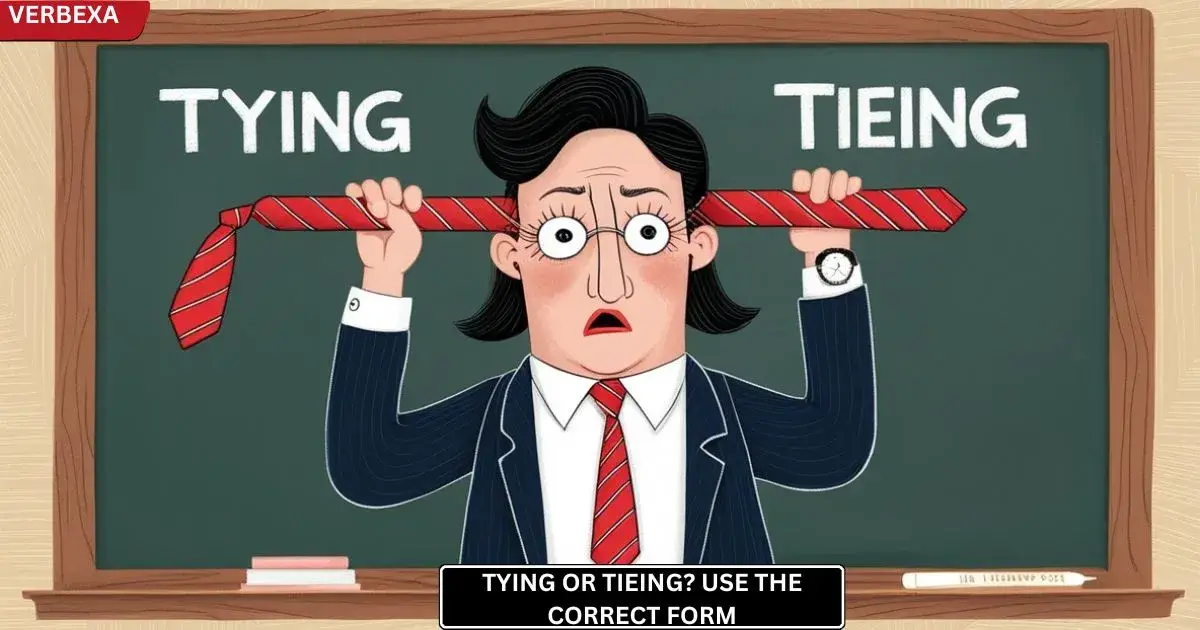English can be tricky, especially when it comes to homophones or similarly spelled words that often cause confusion. One such pair of terms is tying and tieing. These two words are frequently mixed up, even by native speakers, but understanding the differences between them is essential for clear and accurate writing. In this article, we’ll explore the confusion between tying or tieing, explain how to spell tieing, and provide practical tips on when to use each form correctly.
Why These Terms Are Often Confused
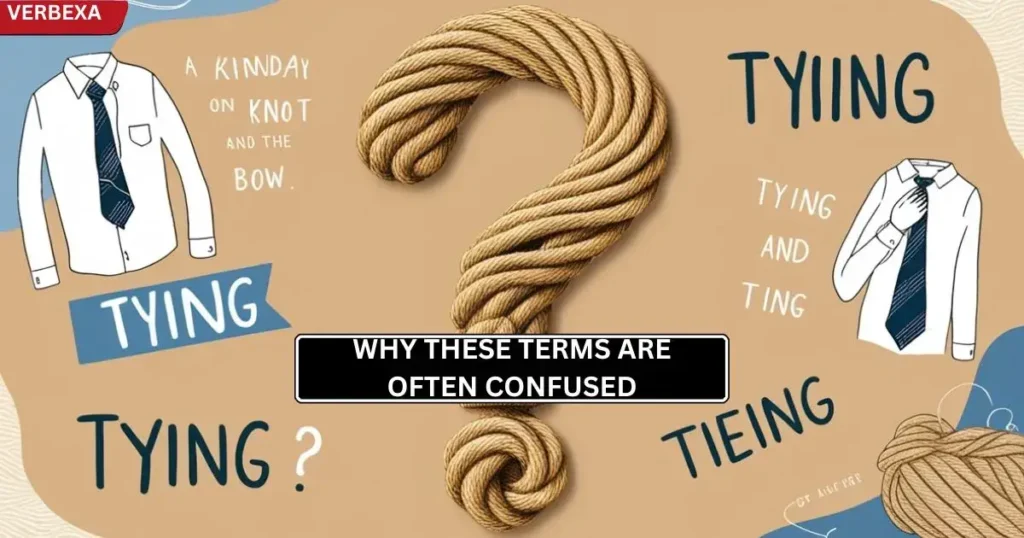
English is full of words that seem similar but have different spellings, meanings, or grammatical roles. Tying and tieing are examples of this phenomenon. Despite being almost identical in sound and meaning, they are used differently, and one of them is actually incorrect in most contexts.
Understanding the right usage of tying or tieing is important because using the wrong form could lead to confusion or make your writing seem less polished. Imagine reading a sentence like “I was tieing my shoes” — while the meaning is clear, the use of tieing is grammatically incorrect. Using the correct form, tying, shows a stronger command of the language.
To make this clear, let’s explore both terms in-depth, look at when and where each should be used, and discuss how to avoid common pitfalls.
Definitions and Usage
Tying
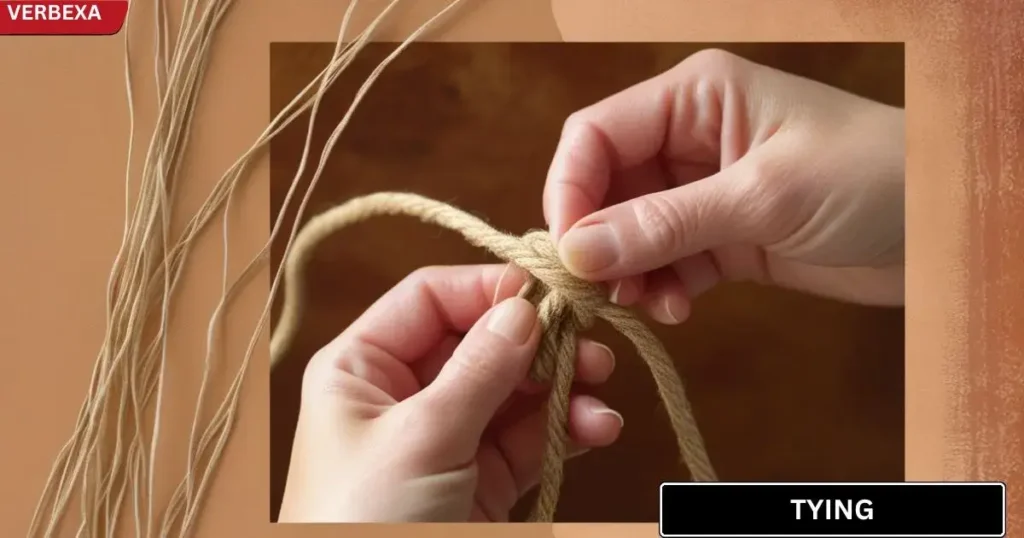
Tying is the correct spelling and the more commonly used form. It is the present participle of the verb tie, which means to fasten or secure something with a knot or by using a cord, string, or similar object. As a present participle, tying can also function as a gerund (a verb acting as a noun) or be part of a continuous tense.
- Examples of “tying” in sentences:
- She was tying her shoes when I called her.
- He is tying the ribbon around the gift box.
- The tying of the knot took longer than expected.
Tieing (Incorrect)
On the other hand, tieing is incorrect in most cases. It’s a common mistake to use tieing instead of tying, especially since both words are pronounced the same way. However, tieing should generally be avoided in standard English.
The confusion likely arises because of the pattern in English where some verbs that end in -ie change to -ying in the present participle form (like “die” becoming “dying” or “lie” becoming “lying”). However, tie is an exception to this rule.
In short: tieing is never the correct form of the verb in modern usage, and you should always opt for tying.
Comparison Table: Tying vs. Tieing
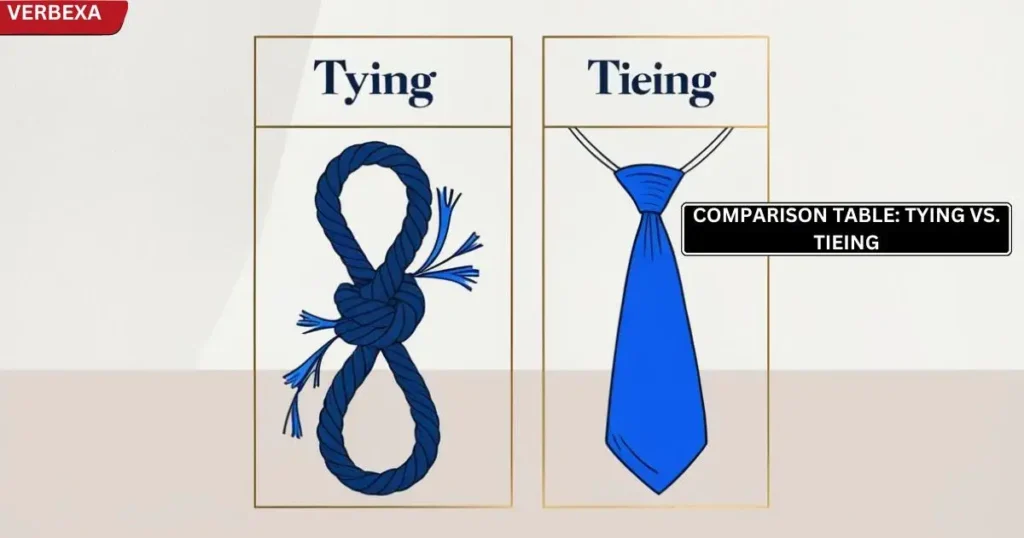
| Aspect | Tying | Tieing |
|---|---|---|
| Definition | The act of fastening or securing with a knot or cord. | A common misspelling of “tying.” |
| Correct Usage | Always used to describe the present participle or gerund form of “tie.” | Incorrect in standard English. |
| Grammatical Role | Present participle, gerund, part of continuous tenses. | Not valid in modern English grammar. |
| Example Sentences | – He is tying the shoelaces. – She spent the afternoon tying ribbons on gifts. | – She was tieing her shoes when I saw her. (Incorrect) |
| Common Mistakes | Often confused with “tieing” by mistake. | Mistakenly used by many as the correct form. |
When to Use Each Term: Actionable Guidance
How to Spell Tieing
The most important rule to remember when deciding whether to use tying or tieing is that tieing is incorrect. Always spell it tying, whether you are using it as a gerund (e.g., “tying my shoes”), or as part of a verb phrase (e.g., “He is tying his scarf”).
Is It Tying or Tieing?
You might be wondering, “How do I know when to spell it tying?” A simple trick is to remember that tieing never appears in modern English except as a mistake. If you see someone write tieing, it is most likely an error that needs to be corrected to tying.
Choosing Between Tying and Tieing in Context
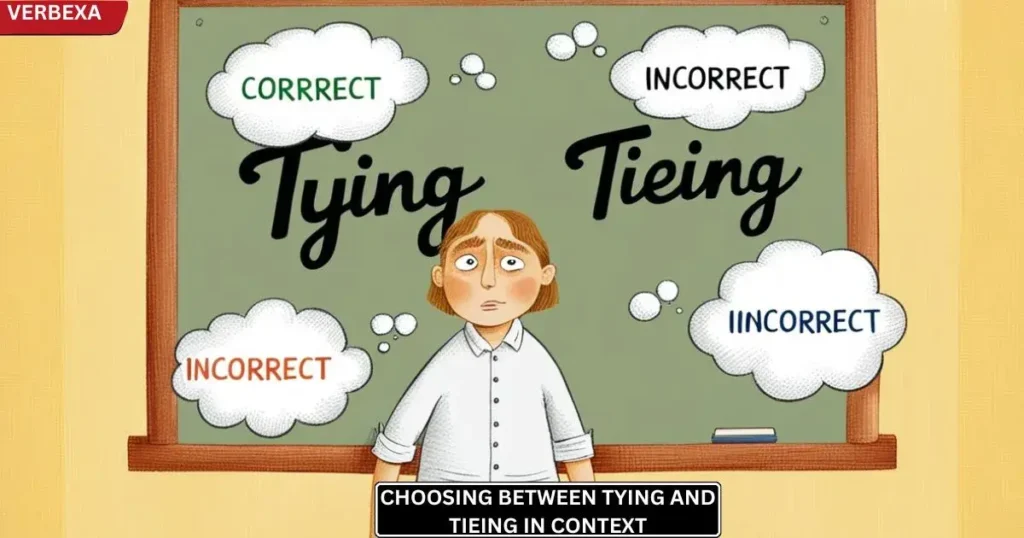
You should always use tying in the following contexts:
- Present participle: When describing an ongoing action.
- He is tying the knot.
- Gerund: When the action is treated as a noun.
- Tying your shoes is important for safety.
- Adjective: To describe a state related to the act of tying.
- The tying of the rope took a long time.
Never use tieing in these situations. It is best to eliminate tieing from your vocabulary entirely and remember that tying is the only grammatically correct option.
Everyday Usage Examples
Let’s solidify the understanding of tying or tieing with some everyday examples. Below are sentences demonstrating tying correctly, and also showing the incorrect use of tieing for comparison.
Correct Usage: Tying
- I am tying my shoelaces before we leave for the event.
- Tying a scarf around your neck is an easy way to stay warm.
- She was tying the ribbon around the gift when I entered the room.
- Tying up loose ends is part of completing any project successfully.
- We should start tying the decorations on the tree soon.
Incorrect Usage: Tieing
- She was tieing her shoes when I saw her. (Incorrect)
- Tieing a knot can be tricky if you don’t know how. (Incorrect)
- I am tieing my jacket because it’s cold. (Incorrect)
- Tieing the rope to the post took longer than expected. (Incorrect)
Notice how the use of tieing in these examples sounds awkward and ungrammatical. Replacing tieing with tying makes the sentences flow better and sound correct.
Frequently asked Questions
What is the correct plural of journey?
The correct plural form of “journey” is “journeys.”
Is it career journeys or journies?
The correct form is “career journeys,” as “journies” is a common misspelling.
What is the meaning of Journies?
“Journies” is an incorrect spelling, and the correct term is “journeys,” which refers to travels or trips.
How do Americans spell journey?
Americans typically spell the word as “journey,” with no variations in spelling.
What is a unique way to spell journey?
There are no widely recognized unique ways to spell “journey” — the standard spelling is preferred.
What words do Americans spell differently?
Americans often spell words differently from other English speakers, such as “color” instead of “colour” and “theater” instead of “theatre.”
Conclusion: Key Differences and Practical Applications
The key takeaway is that tying is the only correct form, while tieing is an error. To ensure your writing is precise and professional, always use tying when referring to the act of fastening or securing something with a knot or similar method.
Tying is widely used in everyday language, from tying shoes to tying ribbons on gifts. It’s a simple term, but one that you don’t want to get wrong, as using tieing will make your writing look less polished and less trustworthy.
- Always use tying in its correct form for continuous tenses, gerunds, and present participles.
- Never use tieing — it’s incorrect and should be avoided in all cases.
By following these guidelines, you can confidently choose the right form every time and avoid confusion. Remember, when in doubt about tying or tieing, just ask yourself: Is it tying or tieing? The answer is clear—tying is always correct.

This author is a passionate linguist and grammar enthusiast, dedicated to helping individuals master the art of language. With years of experience in teaching and editing, she brings clarity and precision to every sentence. Tina’s mission is to empower writers of all levels to express themselves with confidence and excellence.

